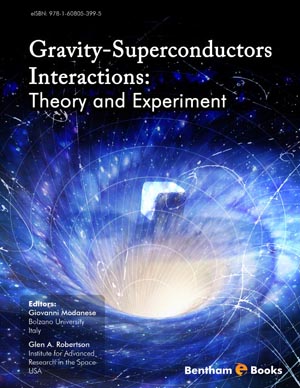Abstract
Based on theoretical ideas under development since 2002, termed Extended Heim Theory (EHT), as well as experiments performed at AIT Seibersdorf, Austria since 2006, it is argued that there is evidence for the existence of novel gravity-like fields and thus also different types of matter. These gravity-like fields are not described by conventional Newtonian (Einsteinian) gravitation, i.e., by the accumulation of mass. Instead, under certain conditions, they should be producible in the laboratory by small ring or disk shaped masses rotating at cryogenic temperatures. EHT, in describing these novel fields, postulates six fundamental physical interactions, three of them of gravitational nature. The two additional gravity-like fields may be both attractive and repulsive. It is further argued, based on both EHT and experiments, that these gravity-like fields are outside the known four physical fundamental forces, and may result from the conversion of electromagnetic into gravitational fields. The gravitomagnetic effect of these fields is found to be some 18 orders of magnitude larger than classical frame dragging of General Relativity. This fact seems to be in accordance with recent experiments performed at AIT Seibersdorf. A non relativistic semiclassical model will be presented as an attempt to explain the physical nature of the novel gravity-like fields. There seems to be a special phase transition, triggered at cryogenic temperatures, responsible for the conversion of electromagnetic into gravitational fields. The features of the six fundamental physical interactions are utilized to investigate the potential of the novel gravity-like fields for propulsion purposes as well as energy generation.
Keywords: Gravitational forces, theories of gravitation, superconductors, general relativity, gravitomagnetism, novel gravity-like fields, fundamental physical interactions, extended heim theory, phase transitions, classical frame dragging, geometrization of physics.













